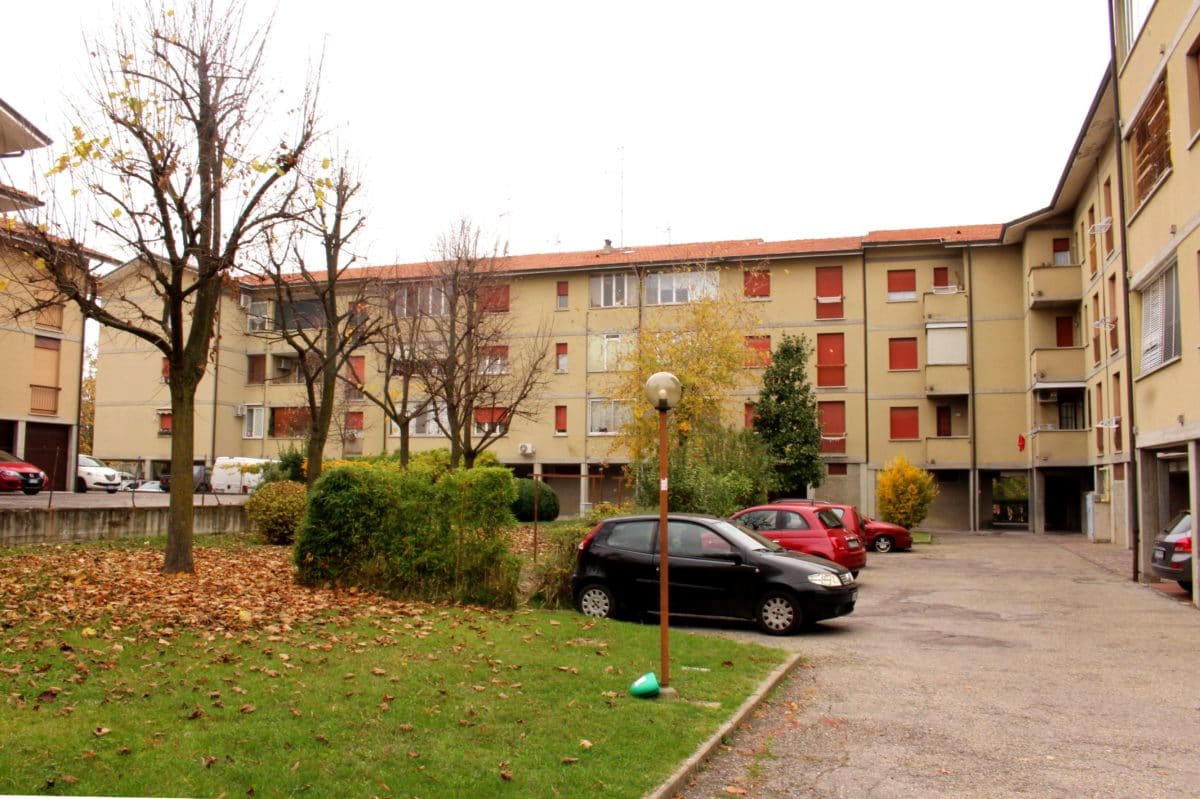A 48-apartment building in the Reggio Emilia province in northern Italy will help assess an energy community business model specifically targeting social housing. The testing phase, which should end by December 2022, will show if and how the model being implemented in the Scandiano municipality will be replicable.
“The project foresees a 60 kW PV system on the roof. Together with a 115.2 kWh storage system, it will be installed by the end of 2021,” project leader Sauro Saraceni told pv magazine. “Next year an EV fleet will be introduced, while consumption monitoring, which began in September 2020, will continue till the end of 2022. That’s to understand eventual complexities arising on the ground,”
Saraceni, who works for ART-ER, an Emilia-Romagna consortium aiming to promote and coordinate sustainable growth of the region, said Scandiano would be an example of PV installations and mobility solutions not just in the region but in the entire country. “Among other residential options, social housing is the one suffering the most from energy poverty,” Saraceni stressed, adding that the region aims to extend this model and promote it to other social housing projects in the coming years.
According to preliminary estimates, the PV and storage system will lead to a 60% reduction in electricity consumption.
The three institutions responsible for preliminary analysis — ART-ER, the Italian research agency ENEA and the University of Bologna — are currently modeling the consumption profiles collected by Enel X, a provider of demand response owned by Italian utility Enel. Meanwhile, ACER Reggio Emilia, the social housing company managing the apartment building, is speaking with potential partners to install a PV and storage system by the end of 2021. Enel X will also supply non-intrusive load monitoring (NILM) devices.
EV fleet
The idea is to offer a fleet of cars shared among the building's residents. “We are analyzing this option with a private partner. The cars, which will be charged with the energy produced by the PV installation, will be offered under a long-term rental contract,” said Saraceni.
Mobility and the residential sector will be two key pillars in Emilia-Romagna’s strategy to achieve carbon neutrality by 2050.
ENEA is contributing through scenario analysis. “We are supporting with studies on how car sharing is reinforcing the renewable energy community,” Piero De Sabbata, responsible of the CROSS-TEC laboratory at ENEA, told pv magazine.
Financing
The broader refurbishing will benefit from the so-called SuperBonus (110% fiscal break) and other pre-existing schemes.
Popular content
“One-third of the PV installation will be financed through the SuperBonus, while the rest through the usual 50% tax break. The storage will be completely financed through the SuperBonus”, Saraceni said, adding that the idea for the project was sketched in 2018 and launched in 2019.
The owners of the 48 apartments will be in charge of the remaining costs. Twenty apartments are privately owned; the municipality of Scandiano owns the other 28.
The entire financing operation will be managed by the local social housing company.
Replicability
The rules about renewable energy communities (RECs), which entered into force in Italy last year, simplified this complex collective self-consumption project.
“We started with a focus on the energy sharing business model, together with the department of electrical, electronic and information engineering of the University of Bologna, analyzing what were the optimal conditions for self-consumption,” said De Sabbata. “With the new law, it is no longer a theoretical exercise. We can practically implement this model.”
According to De Sabbata, the main question now is to understand the residents' consumption profiles and whether awareness campaigns can help them understand their role in the feasibility of similar projects.
“This mobility model would be more successful if the majority of residents would mostly work from home or would not work at all, being for instance retired. This is part of a modeling exercise that can be completed before starting the building refactoring, aimed at meeting the consumption profiles with the production capacity of the installation, as much as with the load profile of the charging stations,” said De Sabbata.
Apart from the focus on mobility and data collection, ENEA is also providing support by analyzing consumption patterns and future use of technologically advanced solutions. “Heat pumps are an example of solutions that can improve the load curve during the day,” De Sabbata concluded.
This content is protected by copyright and may not be reused. If you want to cooperate with us and would like to reuse some of our content, please contact: editors@pv-magazine.com.


1 comment
By submitting this form you agree to pv magazine using your data for the purposes of publishing your comment.
Your personal data will only be disclosed or otherwise transmitted to third parties for the purposes of spam filtering or if this is necessary for technical maintenance of the website. Any other transfer to third parties will not take place unless this is justified on the basis of applicable data protection regulations or if pv magazine is legally obliged to do so.
You may revoke this consent at any time with effect for the future, in which case your personal data will be deleted immediately. Otherwise, your data will be deleted if pv magazine has processed your request or the purpose of data storage is fulfilled.
Further information on data privacy can be found in our Data Protection Policy.